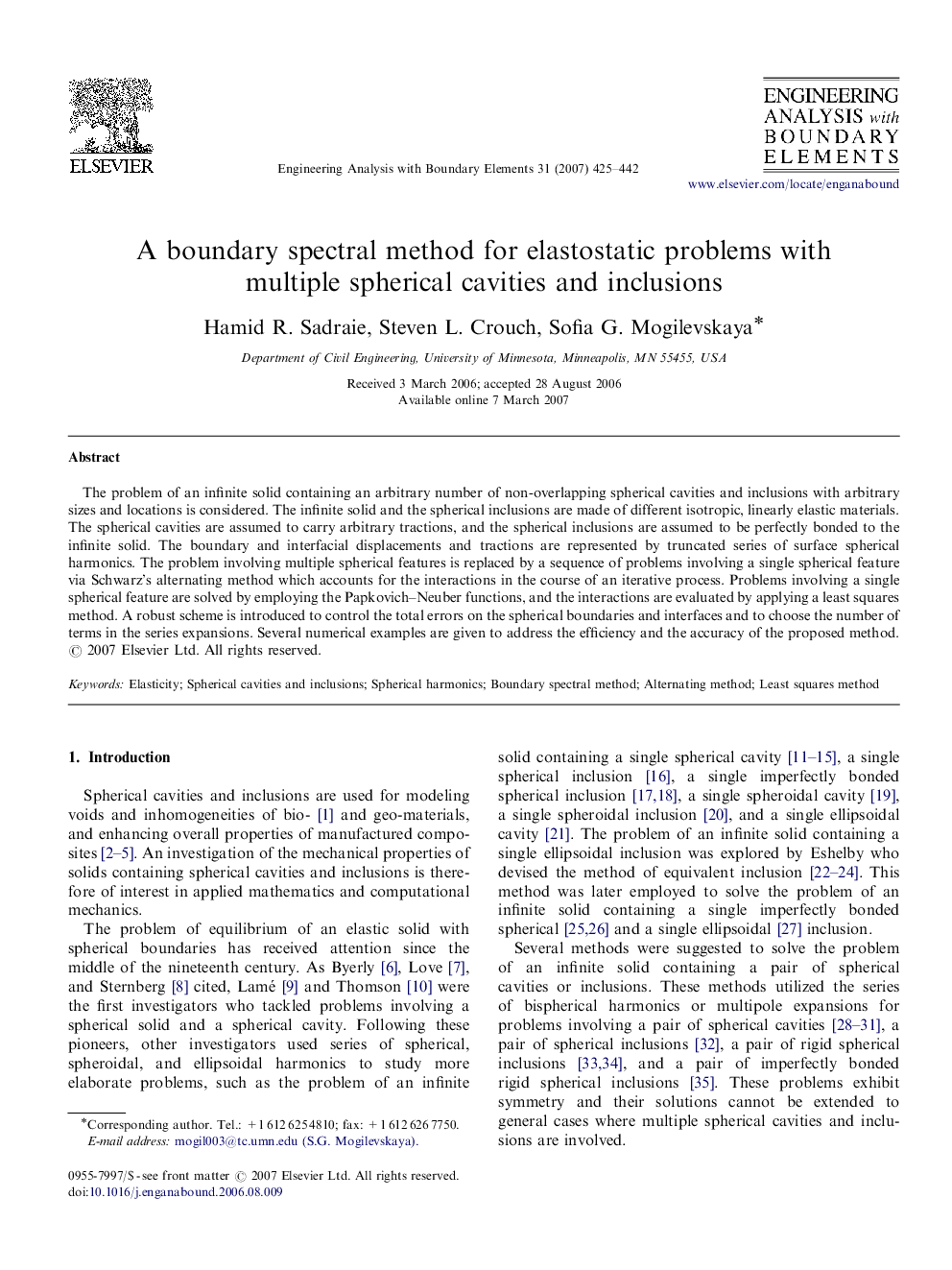| Article ID | Journal | Published Year | Pages | File Type |
|---|---|---|---|---|
| 513661 | Engineering Analysis with Boundary Elements | 2007 | 18 Pages |
The problem of an infinite solid containing an arbitrary number of non-overlapping spherical cavities and inclusions with arbitrary sizes and locations is considered. The infinite solid and the spherical inclusions are made of different isotropic, linearly elastic materials. The spherical cavities are assumed to carry arbitrary tractions, and the spherical inclusions are assumed to be perfectly bonded to the infinite solid. The boundary and interfacial displacements and tractions are represented by truncated series of surface spherical harmonics. The problem involving multiple spherical features is replaced by a sequence of problems involving a single spherical feature via Schwarz's alternating method which accounts for the interactions in the course of an iterative process. Problems involving a single spherical feature are solved by employing the Papkovich–Neuber functions, and the interactions are evaluated by applying a least squares method. A robust scheme is introduced to control the total errors on the spherical boundaries and interfaces and to choose the number of terms in the series expansions. Several numerical examples are given to address the efficiency and the accuracy of the proposed method.
